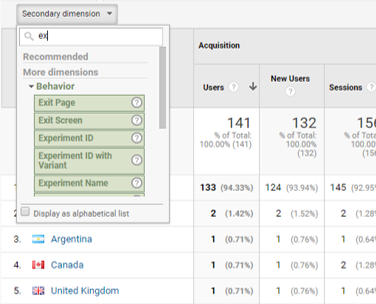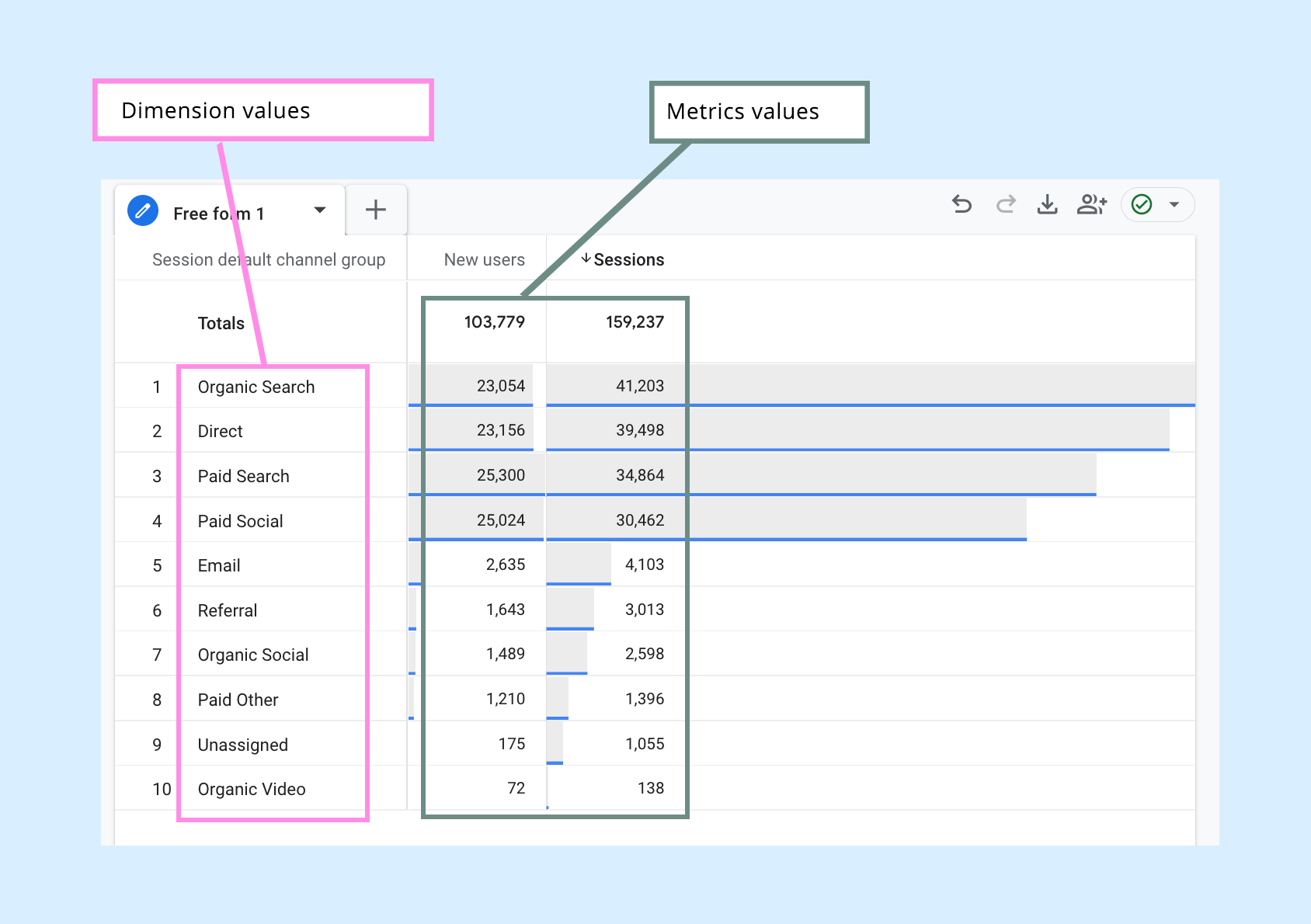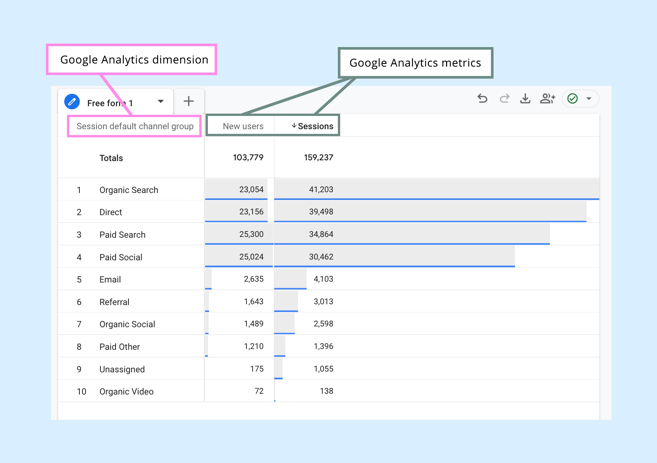Translating the Significance of Additional Measurement in Google Analytics: All Concerning Its Value and Impact
In the world of electronic analytics, the usage of second dimensions within Google Analytics offers as a crucial tool for discerning deeper layers of data insights. The value of additional measurements exists in their capacity to offer a nuanced sight of customer behavior and communication with a site or system.
Understanding Secondary Dimensions in Google Analytics
The understanding of additional measurements in Google Analytics is essential for obtaining much deeper understandings right into customer actions and website performance. While main measurements offer essential information factors such as traffic sources and web page sights, additional measurements enable a much more nuanced evaluation by giving additional context to these primary metrics. By including second dimensions, customers can sector and filter their data to discover patterns and patterns that might not be quickly evident.

Revealing the Perks of Additional Dimensions
Structure upon the fundamental understanding of additional dimensions in Google Analytics, exploring the advantages they offer exposes indispensable understandings for improving information analysis and decision-making. By incorporating second measurements, users can dig much deeper into their data, acquiring a much more thorough sight of individual habits, content efficiency, and various other key metrics.
Additionally, additional dimensions supply context to primary data, supplying additional layers of information that can assist in understanding individual communications and choices. This enhanced understanding can guide strategic decision-making, bring about even more targeted advertising projects, web site optimizations, and general better efficiency. Fundamentally, additional dimensions function as an effective tool for opening much deeper insights and taking full advantage of the utility of Google Analytics for services and web site proprietors.
Leveraging Additional Dimensions for Improved Insights
By harnessing the power of additional dimensions in Google Analytics, organizations can reveal much deeper insights that drive notified strategic and decision-making optimization efforts. Leveraging additional dimensions enables businesses to dig past surface-level information and gain a much more extensive understanding of individual behavior, target market demographics, traffic resources, and web site efficiency. By combining primary dimensions like website traffic resources with additional measurements such as geographic location or device group, organizations can recognize which tools or areas are driving the most important website traffic to their internet site.
Moreover, secondary measurements allow services to section and assess information better, aiding them identify fads, patterns, and chances that might have or else gone undetected. By utilizing additional measurements, companies can tailor their advertising techniques, web content, and individual experience to much better satisfy the requirements and choices of their target audience. Basically, leveraging secondary dimensions in Google Analytics encourages companies to make data-driven choices that cause improved efficiency, boosted ROI, and sustainable growth.

Influence of Additional Dimensions on Data Evaluation
Enhancing information evaluation via the usage of More Info additional dimensions in Google Analytics supplies organizations with a much deeper understanding of their on-line performance metrics. By integrating secondary dimensions, such as time of day, geographical area, or tool classification, companies can uncover useful understandings that might have been overlooked with main dimensions alone. This enhanced level of granularity permits more precise segmentation of data, making it possible for organizations to determine patterns, trends, and correlations that can drive tactical decision-making.

Making The Most Of Possible: Secondary Dimensions Strategies
One key approach is to integrate additional measurements with main measurements to get a detailed sight of individual communications. Matching the main dimension of 'source/medium' with additional dimensions like 'touchdown page' or 'gadget group' can reveal which channels are driving traffic to particular web pages or just how user habits varies throughout gadgets.
Additionally, utilizing second dimensions to section data based upon individual demographics, behavior, or modern technology can help services customize their marketing efforts to specific target market segments. This targeted approach can lead to boosted conversion prices, improved individual experiences, and ultimately, increased ROI. By optimizing the possibility of additional dimensions in Google Analytics, organizations can make informed choices, optimize their on the internet presence, and drive lasting growth.
Final Thought
In final thought, secondary dimensions in Google Analytics play a critical function in offering deeper insights and improving data analysis. Integrating second measurements right into information analysis methods can lead to more enlightened decision-making and improved overall efficiency.
While main dimensions supply fundamental information factors such as traffic Check This Out resources and web page sights, second dimensions enable for an extra nuanced evaluation by giving additional context to these primary metrics. By combining key dimensions like traffic resources with additional dimensions such as geographic place or device group, services can recognize which tools or areas are driving the most useful web traffic to their web site.
By including additional measurements, such as time of day, geographic place, or tool category, services can discover valuable insights that might have been forgotten with main measurements alone. One essential strategy is to integrate second dimensions with key dimensions to get a detailed sight of user communications. Combining the primary dimension of 'source/medium' with additional measurements like 'touchdown web page' or 'device classification' can reveal which channels are driving traffic to details pages or how customer actions differs throughout tools.